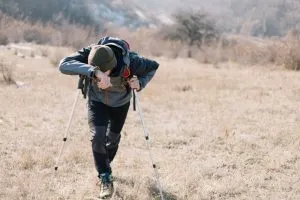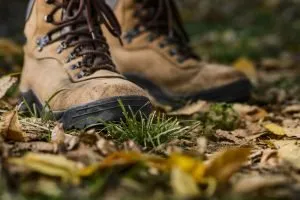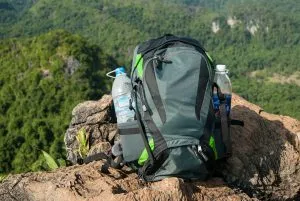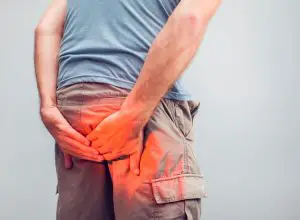Does Gorilla Glue Work for Shoe Repairs? (You’ll Be Surprised)
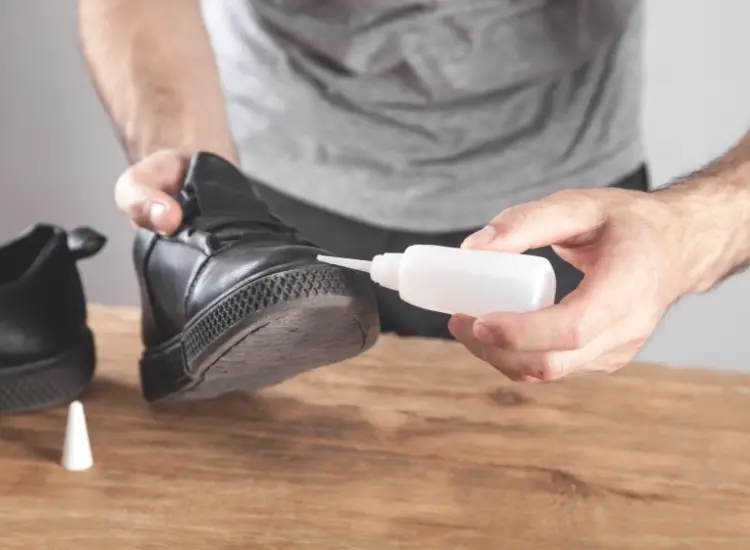
Does Gorilla Glue work for shoe repairs? If you’ve ever found yourself with a pair of shoes that need fixing, you may have wondered if this popular adhesive could do the trick. Well, the short answer is yes – Gorilla Glue can be a great option for shoe repairs!
Gorilla Glue is known for its strong and durable hold, making it a reliable choice for fixing all sorts of things, including shoes. Whether you have a loose sole, a broken heel, or a detached strap, Gorilla Glue can help bond the materials back together, providing a sturdy and long-lasting repair.
Quick Links
Benefits of Using Gorilla Glue for Shoe Repairs
Strong and Durable Bond
Gorilla Glue is known for its superior bonding strength. When used for shoe repairs, it creates a strong and durable bond that can withstand the rigors of daily wear and tear. Whether it’s fixing a detached sole or repairing a broken heel, Gorilla Glue provides a reliable solution that can extend the lifespan of your favorite shoes.
Waterproof and Weatherproof
One of the key benefits of Gorilla Glue is its waterproof and weatherproof properties. Once dried, it creates a moisture-resistant barrier that protects your shoes from water damage and the elements. This is particularly useful for outdoor footwear or shoes that are frequently exposed to rain, snow, or other harsh conditions.
Versatile Application
Gorilla Glue can be used on various shoe materials, including leather, rubber, fabric, and even synthetic materials. Whether you’re repairing sneakers, boots, dress shoes, or sandals, Gorilla Glue is versatile enough to handle different types of repairs. It can bond different materials together, making it a go-to adhesive for a wide range of shoe repair projects.
Long-lasting Results
When properly applied, Gorilla Glue provides long-lasting results. It creates a strong bond that can withstand repeated stress and movement without deteriorating. This means your shoe repairs are more likely to hold up over time, saving you the hassle and cost of frequent re-repairs or replacements.
Easy to Use
Gorilla Glue comes in a user-friendly format, making it easy to use for shoe repairs. The glue is typically applied in small amounts and allows for precise application. It also dries clear, ensuring a clean and invisible repair that doesn’t detract from the appearance of your shoes.
With these benefits, it’s no wonder that Gorilla Glue is a popular choice for shoe repairs. Whether you’re fixing a minor sole separation or undertaking a more complex repair, Gorilla Glue provides the strength, durability, and versatility needed to restore the functionality and appearance of your beloved footwear.
Steps for Properly Applying Gorilla Glue to Repair Shoes
When it comes to fixing your shoes with Gorilla Glue, following the proper application steps is crucial for a successful repair. Whether you’re mending a loose sole or reattaching a broken strap, here are the steps to ensure a strong and durable bond:
- Clean the surfaces: Before applying Gorilla Glue, make sure the areas you’re going to glue are clean and free of dirt, dust, and any previous adhesive residue. Use a mild soap or cleaner and a soft cloth to gently clean the surfaces. Allow them to dry completely before moving on to the next step.
- Apply the glue: Squeeze a small amount of Gorilla Glue onto one of the surfaces you’re going to bond. Remember that a little goes a long way, so start with a small amount and add more if needed. Avoid over-applying the glue, as it can expand during curing.
- Spread the glue: Use a disposable applicator, such as a disposable brush or a popsicle stick, to spread the glue evenly over the surface. Make sure to cover the entire area that needs to be bonded. Be careful not to apply too much pressure, as it can squeeze out excess glue.
- Join the surfaces: Press the two surfaces together firmly but gently. Make sure they are aligned correctly before the glue starts to set. Avoid moving or readjusting the surfaces once they are joined, as it can weaken the bond.
- Secure the bond: After joining the surfaces, use clamps or heavy objects to hold them in place. This will help ensure a secure bond while the glue cures. Follow the curing time specified on the Gorilla Glue packaging for best results.
- Remove excess glue: If any glue oozes out during the bonding process, wipe it away with a damp cloth or sponge before it dries. Once the glue has dried, it can be difficult to remove without damaging the shoe.
- Allow for full curing: Give the glued shoe ample time to fully cure before subjecting it to any stress or pressure. This can take up to 24 hours, depending on the specific Gorilla Glue product and the environmental conditions.
By following these steps and taking your time with the application, you can effectively repair your shoes using Gorilla Glue. Remember to read and follow the instructions provided by the manufacturer for the specific Gorilla Glue product you are using.
Types of Shoes That Gorilla Glue Is Suitable for
When it comes to repairing shoes, Gorilla Glue is a popular option for its strong and durable bond. However, it’s important to know which types of shoes are suitable for Gorilla Glue to ensure a successful repair. Here are some common types of shoes that Gorilla Glue is suitable for:
- Sneakers: Gorilla Glue works well on various types of sneakers, including canvas, leather, and synthetic materials.
- Boots: Whether it’s work boots or fashion boots, Gorilla Glue can effectively mend different types of boot materials, such as leather or rubber.
- Heels: Gorilla Glue can be used to fix heel separations or secure loose parts on high heels or pumps.
- Sandals: From flip-flops to strappy sandals, Gorilla Glue can help repair minor damages like detached soles or loose straps.
- Athletic Shoes: Whether it’s running shoes or basketball shoes, Gorilla Glue can handle the demands of athletic footwear and withstand the stress of repetitive movements.
- Casual Shoes: Gorilla Glue is suitable for casual shoes like loafers, boat shoes, or slip-on styles made from various materials.
Remember to always follow the instructions provided by the Gorilla Glue manufacturer and allow sufficient drying time for the glue to fully cure. If you are unsure about using Gorilla Glue on a specific type of shoe or if the damage is severe, it’s always best to consult a professional shoe repair service for guidance.
Tips for Preparing the Shoes Before Applying Gorilla Glue
Clean the Surface
Before applying Gorilla Glue to your shoes, it is important to clean the surface thoroughly. Use a mild soap or detergent and warm water to remove any dirt, dust, or grime. Scrub gently with a soft brush or cloth to ensure a clean and smooth surface for the glue to adhere to.
Remove Any Existing Glue or Adhesive
If your shoes have any old glue or adhesive residue, it is recommended to remove it before applying Gorilla Glue. Use a solvent or adhesive remover specifically designed for the type of material your shoes are made of. Follow the instructions provided with the solvent and use a cloth or sponge to gently rub away the residue. Make sure to wipe off any excess solvent and allow the shoes to dry completely before proceeding.
Sand the Surface (if necessary)
In some cases, the surface of the shoes may need to be sanded to create a better bonding surface for the Gorilla Glue. Use a fine-grit sandpaper and gently sand the area where the glue will be applied. This helps to create a rougher surface, allowing the glue to adhere more effectively. Be careful not to sand too aggressively, as this can damage the material of the shoes.
Apply a Primer (optional)
For certain materials, such as smooth leather or synthetic fabrics, it may be beneficial to apply a primer before using Gorilla Glue. This can help improve the bond and ensure better adhesion. Make sure to choose a primer that is compatible with the material of your shoes and follow the manufacturer’s instructions for application.
Ensure Proper Fit and Alignment
Before applying Gorilla Glue, make sure the shoes are properly aligned and fit correctly. If there are any gaps or misalignments, it is important to address them before applying the glue. Use clips, clamps, or other methods to hold the shoes in place while the glue sets. This will help ensure a strong and secure bond.
By following these tips and properly preparing your shoes before applying Gorilla Glue, you can increase the chances of a successful and long-lasting repair. Always carefully read and follow the instructions provided with the glue for the best results.
Common Mistakes to Avoid When Using Gorilla Glue for Shoe Repairs
When it comes to using Gorilla Glue for shoe repairs, it’s important to follow the proper techniques and avoid common mistakes to ensure successful results. Here are some mistakes to avoid when using Gorilla Glue for shoe repairs:
- Applying too much glue: Using excessive amounts of Gorilla Glue can lead to messy and uneven application. It’s important to apply a thin and even layer to avoid excess glue squeezing out of the shoe.
- Using Gorilla Glue on wet surfaces: Gorilla Glue works best on dry surfaces. Applying it to wet or damp shoes can hinder its bonding ability. Make sure to clean and thoroughly dry the shoes before applying the glue.
- Not properly preparing the surface: Before applying Gorilla Glue, it’s important to prepare the surface by cleaning it thoroughly and roughening it with sandpaper. This helps create a better bond and improves the adhesive’s effectiveness.
- Not using clamps or pressure: To ensure a strong and secure bond, it’s essential to apply pressure to the glued surfaces. Using clamps or heavy objects can help keep the surfaces together while the glue sets.
- Not allowing enough drying time: Gorilla Glue requires sufficient drying time to achieve maximum strength. It’s important to follow the recommended drying time specified on the product packaging and avoid using the repaired shoes too soon.
By avoiding these common mistakes, you can successfully use Gorilla Glue for shoe repairs and extend the lifespan of your favorite footwear.
Alternative Shoe Repair Options to Consider
When your favorite pair of shoes starts showing signs of wear and tear, it’s natural to consider repairing them rather than buying a new pair. While traditional shoe repair shops are an option, there are alternative options worth exploring. Here are a few alternatives to traditional shoe repair that you may find useful:
DIY Shoe Repair Kits
For minor repairs like fixing loose soles or replacing worn-out heel caps, DIY shoe repair kits can be a convenient and cost-effective option. These kits typically include adhesive, replacement parts, and basic tools to help you tackle simple repairs at home. They offer a DIY solution that can save you time and money.
Online Shoe Repair Services
If you’re not comfortable taking on shoe repairs yourself or don’t have a local shoe repair shop nearby, online shoe repair services can be a convenient alternative. These services allow you to ship your shoes to a professional repair technician, who will assess the damage and perform the necessary repairs. The repaired shoes will then be shipped back to you, good as new.
Shoe Repair Adhesives
Certain shoe repairs, such as fixing a loose sole or reattaching a detached upper, can be effectively done using specialized shoe repair adhesives. These adhesives are designed to provide strong and durable bonds, allowing you to fix minor issues without the need for professional help. They are readily available at many stores and can be a quick and easy solution for small repairs.
Cobblers at Local Markets or Craft Fairs
Local markets and craft fairs often feature skilled cobblers or shoe repair artisans who offer their services on-site. This can be a great opportunity to get your shoes repaired while supporting local businesses. These cobblers are usually experienced in a wide range of shoe repair techniques and can handle various types of repairs, from sole replacement to zipper fixes.
By considering these alternative shoe repair options, you can extend the life of your favorite shoes and save money in the process. Whether you choose to DIY, utilize online services, or seek out local cobblers, you’ll have various options to address your shoe repair needs and keep your footwear in top condition.
Factors to Consider Before Attempting Shoe Repairs with Gorilla Glue
Before attempting shoe repairs with Gorilla Glue, it is important to consider several factors to ensure successful results and avoid potential damage to your shoes. Gorilla Glue is a strong adhesive that can bond various materials, including shoes, but it is crucial to take the following factors into account:
- Type of shoe material: Gorilla Glue works best on materials like leather, fabric, vinyl, and rubber. It may not be suitable for shoes made of suede or delicate materials.
- Extent of damage: Consider the severity of the damage to determine if Gorilla Glue is a suitable solution. It is best for minor repairs like loose soles or detached straps, but may not be appropriate for extensive damage.
- Preparation: Prepare the shoe surface by cleaning it thoroughly and ensuring it is dry. Gorilla Glue bonds best on clean, dry surfaces, so removing any dirt, dust, or previous adhesives is important.
- Application technique: Follow the instructions provided by Gorilla Glue for proper usage. Apply a thin layer of glue to both surfaces, press them together firmly, and secure them with clamps or heavy objects if necessary.
- Drying and curing time: Allow sufficient drying and curing time as specified by the manufacturer. Avoid using or putting pressure on the repaired area until the glue has fully cured to ensure a strong bond.
- Long-term durability: While Gorilla Glue provides strong initial adhesion, consider the long-term durability of the repair. Factors like regular use, exposure to moisture, and flexibility of the shoe material may affect the longevity of the bond.
It is important to note that Gorilla Glue expands as it cures, so applying it sparingly and avoiding excessive glue can prevent messiness or damage to the shoe’s appearance. If uncertain or dealing with valuable or sentimental shoes, it may be advisable to consult a professional shoe repair service for the best results.
Advice for Maintaining and Extending the Lifespan of Repaired Shoes
Proper Cleaning and Maintenance
Keeping your repaired shoes clean and well-maintained is essential for extending their lifespan. Here are some tips to help you maintain your shoes:
- Regularly wipe off dirt and dust: Use a soft cloth or brush to remove any dirt or dust from the surface of your shoes.
- Clean stains promptly: If you notice any stains on your shoes, clean them as soon as possible using a mild soap or detergent and water.
- Condition leather shoes: Apply a leather conditioner to your repaired leather shoes to keep the material moisturized and prevent cracking.
- Store properly: When not wearing your repaired shoes, store them in a cool, dry place to minimize damage from moisture or extreme temperatures.
Protective Measures
Taking proactive steps to protect your repaired shoes can significantly extend their lifespan. Consider these protective measures:
- Use shoe trees: Inserting shoe trees into your repaired shoes when not in use helps maintain their shape and minimizes creasing.
- Apply water repellent spray: Use a water repellent spray to protect your shoes from moisture, stains, and damage caused by water exposure.
- Invest in shoe covers: If you anticipate wearing your repaired shoes in inclement weather or in rough conditions, invest in shoe covers to provide an extra layer of protection.
Rotate and Rest
Rotating your repaired shoes and allowing them to rest can prevent excessive wear and tear. Consider the following practices:
- Rotate your shoes: Avoid wearing the same pair of repaired shoes every day. Rotate between multiple pairs to give each one a chance to rest and recover.
- Gentle wear: Avoid wearing your repaired shoes for long periods of time or engaging in strenuous activities that can put excessive strain on the shoes.
- Allow for air circulation: After wearing your shoes, let them air out in a well-ventilated area to dry any moisture and reduce odor.
By following these tips for maintaining and extending the lifespan of your repaired shoes, you can enjoy them for longer and get the most out of your investment.
Conclusion
Gorilla Glue is a reliable choice for shoe repairs, offering a strong and durable bond that can withstand daily wear and tear. Its waterproof and weatherproof properties provide added protection for outdoor footwear. With its versatility and long-lasting results, Gorilla Glue is suitable for various shoe materials and can extend the lifespan of your favorite shoes.
Properly applying Gorilla Glue involves cleaning the surfaces, spreading the glue evenly, and joining the surfaces with pressure. By following the steps and avoiding common mistakes, you can achieve successful shoe repairs. It’s important to consider factors such as the type of shoe material, the extent of damage, and the drying and curing time for the best results.
Overall, using Gorilla Glue for shoe repairs can be a cost-effective and reliable solution, ensuring that you can continue enjoying your favorite footwear for years to come.

